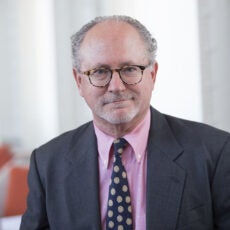
You’ve Never Heard of the Best Film Ever Made on What We Call Climate Change
What can a film from the 1960s teach us about today's changing climate?
Climate change challenges art as much as science. The search for questions capable of leading to answers that matter is the lonely start of all great art and science. And climate change demands lots of choices about those questions and answers for writers and filmmakers. The subject is complex, enormous, contested, and seems to change faster than guidance on healthy eating. What is the compelling story here?
The new genre of climate fiction or “cli-fi” demonstrates both the difficulty and the potential of art exploring climate change for good stories. Narrative art like novels and movies takes us places science can’t reach on its own, and the heroic efforts of many climate scientists to improve their communication skills prove this fact.
People already great at telling stories have been searching the world of climate change for questions with answers that matter. We have shelves of fine novels making great choices about questions and answers used to imagine characters and plots revealing realities we’ve never quite fully recognized before. Kim Stanley Robinson’s Ministry for the Future (2020), Louise Erdrich’s Future Home of the Living God (2017), Omar El Akkad’s American War (2018), and Alison Stine’s Road out of Winter (2020) are just four very different takes on climate fiction that spark this recognition over and over.
It’s harder to find films delivering a climate story that takes up permanent residence in our memories by changing how we think and feel. That’s the essential characteristic of art in public life: great art doesn’t try to convince us of something, instead it shows us something we recognize as true before we even realize we may have changed our deeply held position on something.
Adam McKay’s Don’t Look Up (2021) and Daniel Goldhaber’s How to Blow Up a Pipeline (2022) show how different a good climate change film can be in scale and tone and other qualities. And while each has its nuances, both are a little too on the nose for me—too much convincing without enough recognizing.
Until about a week ago, the climate film that I found most astonishing and memorable was Paul Schrader’s First Reformed (2017). Here’s a film that elevates the climate crisis to a crisis of faith, a hard slog that manages to make the existential risks of climate change relatable to the many more people who understand God a whole lot better than they understand climatology.
But last week, I stumbled on a new favorite when I watched a film on the Criterion Channel called The Day the Earth Caught Fire. It’s a black-and-white UK film from 1961. The simple fact of the film being 60 years old is part of its devastating impact. Recent enough to portray a world we recognize but remote enough to carry a moral authority that the present seems to lack. The vintage of the film provides another benefit: the special effects are visually convincing and emotionally moving without being distracting.
The film unfolds a series of events that disrupt the earth’s climate. The main setting for the story is a newsroom and the film leverages this in remarkable ways. Various reporters are on the beat trying to account for sweltering temperatures and flooding rivers. For one it’s a human-interest story. For another it’s a government conspiracy story.
It’s the science reporter that starts to connect causes and effects. The conversations in the newsroom present compelling dialog on doubt and trust and learning as the science reporter explains what’s happening as each new fact emerges. In an era without climate science, these characters are having the best conversations I’ve ever heard on climate impacts, which as the movie progresses eventually account for virtually all of the impacts identified and measured in the IPCC’s AR6 reports.
But the most staggering parts of the film come in the scenes where blame and culpability are discussed and assigned. In this film, it is the Cold War that allows blind interest and general apathy to foster the devastation of the Earth. But the dialog is uncannily similar to (just better written than) exactly the same conversations we are trying to have, substituting “Cold War” with “fossil fuels.” In fact, precisely because the film asks “how could we let this go on decades?” without including today’s characters allows the dialog to get past our filters and really lands its punches.
In The Day the Earth Caught Fire, art not only reveals realities that convince without trying, but also reveals by its eerie relevance 60 years later just how enduring are the human qualities that create and sometimes defy our greatest challenges.
Mark Alan Hughes
Director EmeritusMark Alan Hughes is director emeritus of the Kleinman Center. During his time as faculty director, he led the Center and wrote on topics ranging from deep decarbonization to the future of Philadelphia’s energy landscape.

